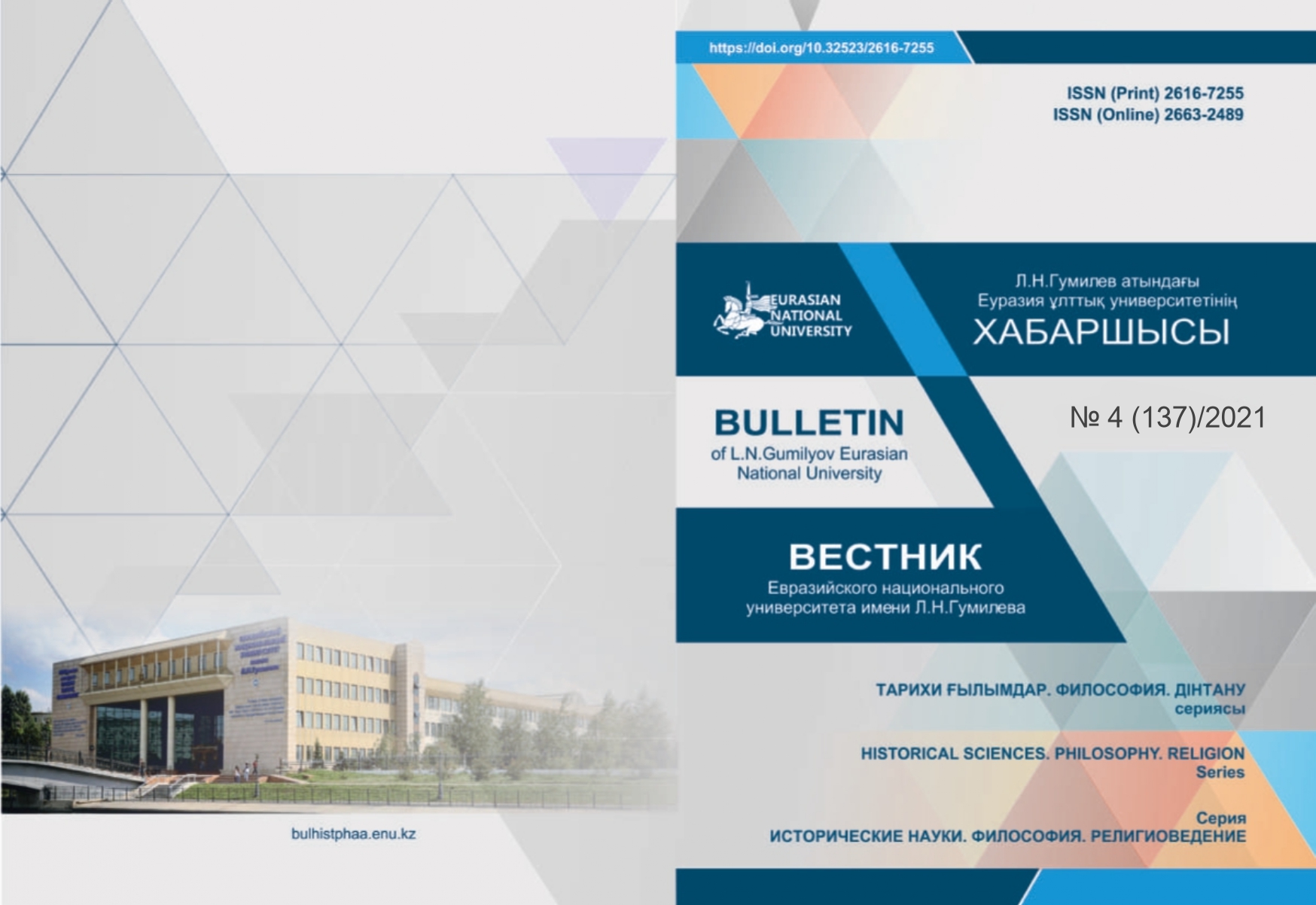Study of the Turkic-speaking population in the south of Western Siberia by employees of the Research Institute of the Art Industry (NIIHP) in the 1950s and 1970s
Views: 139 / PDF downloads: 110
DOI:
https://doi.org/10.32523/2616-7255-2021-137-4-123-140Abstract
In the 1940s-1970s, the ethnographic study of the territory of the modern Republic of Altai was conducted by both ethnographers and representatives of the neighboring sciences. During this period the population of the Altai Mountains became the object of field research of art historians and specialists from the Research Institute of Art Industry (hereinafter referred to as NIIHP). The publication aims to show the contribution of the staff of the Art Industry Research Institute to the study of the Turkic-speaking population of the south of Western Siberia within the historical boundaries of Altai Krai. The publication aims to reveal the routes and results of expeditions on the territory of the Altai Republic to study arts and crafts and decorative-applied art of the indigenous population of the Altai Mountains. The main source base for the research is the archival funds of the Scientific Research Institute of Arts and Crafts, most of which have remained in the All-Russian Museum of Decorative-Applied and Folk Art (hereinafter
referred to as VNIIHP). The basis is formed by the reports on scientific topics and business trips, as well as visual
sources (sketches, photographs, drawings of artists). The source base created by the staff of the NIIHP is not
only varied but also of very high quality due to the high professionalism of the staff artists and photographers
of the Institute who participated in the expeditions.
The territory of the modern Republic of Altai was covered by the fieldwork of 4 expeditions in the 1950s
(1951, 1954, 1955) and one in 1979. The initial interest of the researchers in studying this territory was in the
culture of the Turkic-speaking population, Turkic traditions of carpet-weaving, and ornamentation. The main
objects of research were the architecture of houses, domestic utensils, clothes, shoes, as well as ornaments, and
weaving items. The field expeditionary activity of NIIHP is very important for the study of ethnography of the Turkicspeaking peoples in the south of Western Siberia and opens great potential for its further research in different
fields of ethnographic science. The expeditions resulted in the collection of a considerable amount of illustrative
material, not introduced into scientific circulation and not analyzed from the standpoint of ethnography. Expeditions included the acquisition of exhibits for the Museum of Folk Art of the NIIHP, including those of the Turkic-speaking peoples of the south of Western Siberia, which can be used for research on various topics. Also of interest for researchers are the materials of analytical reports of the NIIHP staff, which can be used for comparison of the results and further analysis.
Downloads

Downloads
Published
Issue
Section
License
Copyright (c) 2021 T.K. Shcheglova, A.V. Rykov

This work is licensed under a Creative Commons Attribution-NonCommercial 4.0 International License.







